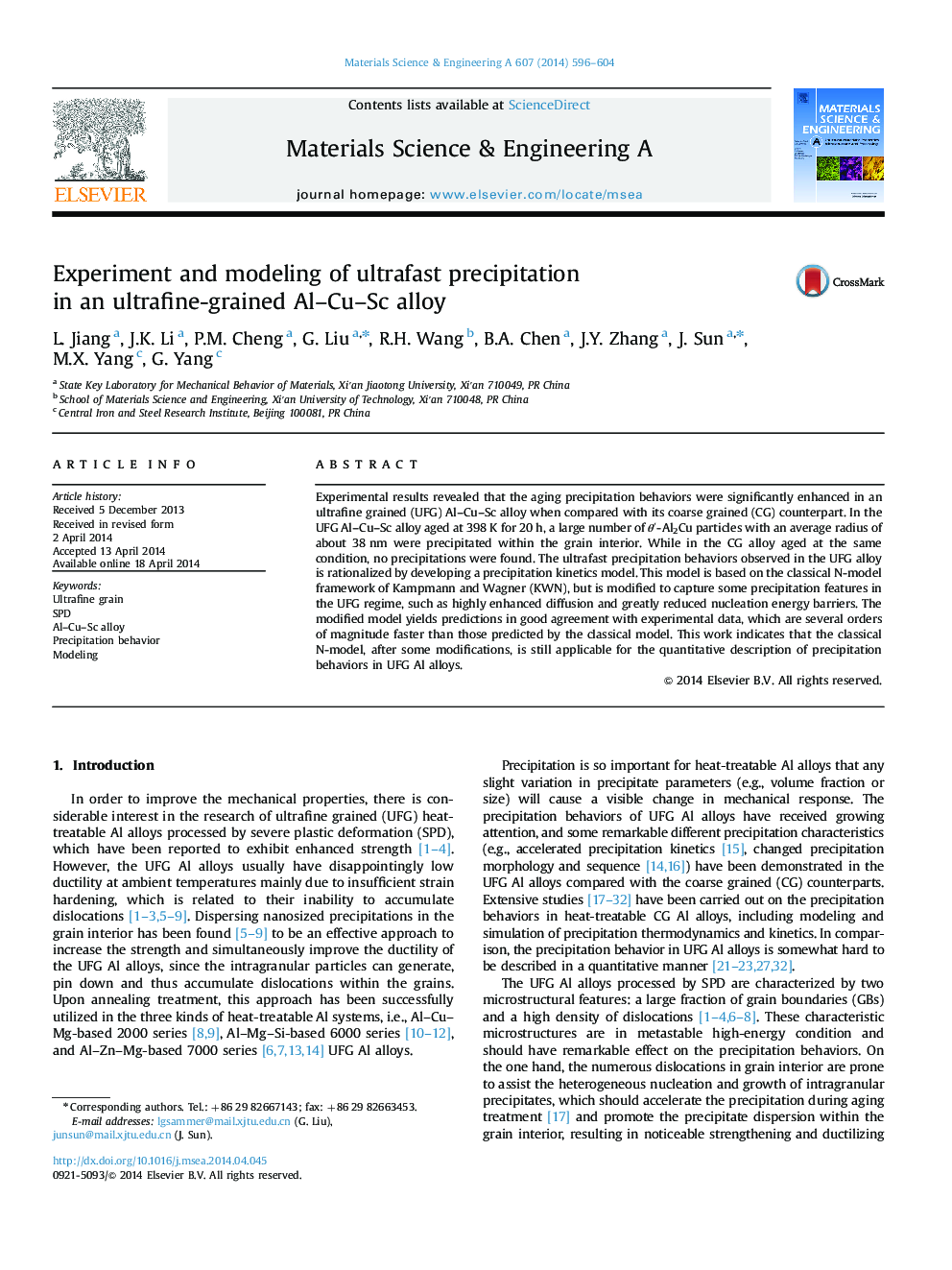| Article ID | Journal | Published Year | Pages | File Type |
|---|---|---|---|---|
| 1575014 | Materials Science and Engineering: A | 2014 | 9 Pages |
Abstract
Experimental results revealed that the aging precipitation behaviors were significantly enhanced in an ultrafine grained (UFG) Al-Cu-Sc alloy when compared with its coarse grained (CG) counterpart. In the UFG Al-Cu-Sc alloy aged at 398 K for 20 h, a large number of θâ²-Al2Cu particles with an average radius of about 38 nm were precipitated within the grain interior. While in the CG alloy aged at the same condition, no precipitations were found. The ultrafast precipitation behaviors observed in the UFG alloy is rationalized by developing a precipitation kinetics model. This model is based on the classical N-model framework of Kampmann and Wagner (KWN), but is modified to capture some precipitation features in the UFG regime, such as highly enhanced diffusion and greatly reduced nucleation energy barriers. The modified model yields predictions in good agreement with experimental data, which are several orders of magnitude faster than those predicted by the classical model. This work indicates that the classical N-model, after some modifications, is still applicable for the quantitative description of precipitation behaviors in UFG Al alloys.
Related Topics
Physical Sciences and Engineering
Materials Science
Materials Science (General)
Authors
L. Jiang, J.K. Li, P.M. Cheng, G. Liu, R.H. Wang, B.A. Chen, J.Y. Zhang, J. Sun, M.X. Yang, G. Yang,
